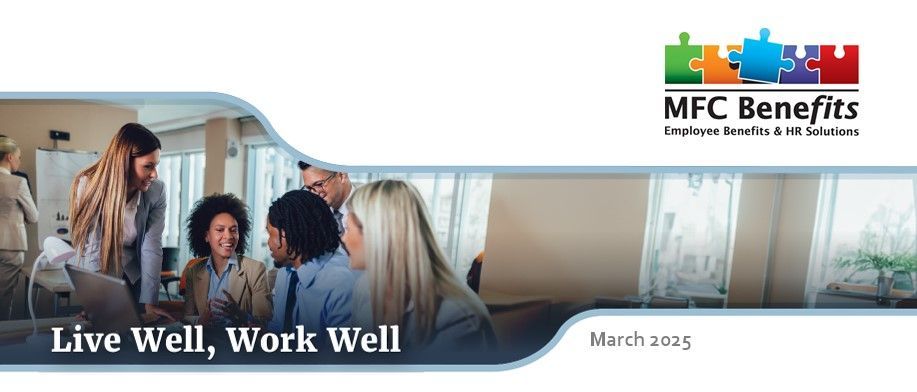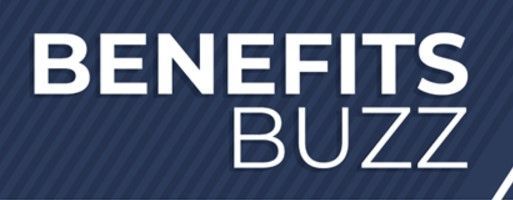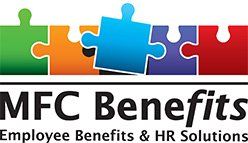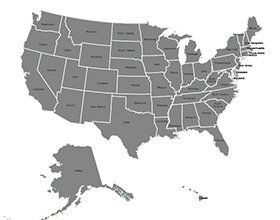Live Well, Work Well - February 2020
Health and Wellness tips brought to you by MFC Benefits, LLC
Learn more about the heart disease, common cold and ways to a pain-free workday:
IT'S AMERICAN HEART MONTH: WHAT YOU NEED TO KNOW ABOUT HEART DISEASE
Heart disease is the leading cause of death for both women and men in the United States, causing about 647,000 deaths annually, according to the Centers for Disease Control and Prevention (CDC). Heart disease is also an extremely expensive disease—costing the United States about $207 billion annually in health care, medications and lost productivity.
What is heart disease?
Heart disease is a term used to refer to several different types of heart conditions. Out of all the different conditions, coronary artery disease—caused by plaque buildup in the walls of the heart’s arteries—is the most common.
"According to the CDC, 1 in 4 Americans die each year from heart disease."
What are the symptoms of heart disease?
The symptoms of heart disease can vary, and some people may not even know they have a heart condition until they
have a heart attack. Common signs and symptoms of heart disease include shortness of breath, dizziness, chest pain, heart palpitations, weakness and fatigue. you experience any of these symptoms, or if they become more severe or frequent, contact your doctor.
Is heart disease preventable?
In many cases, heart disease can be prevented by living a healthy lifestyle and properly managing health conditions.
American Heart Month, organized by the American Heart Association (AHA), is designed to raise awareness about heart disease and how people can prevent it. Here are tips that may help prevent heart disease:
- Refrain from smoking.
- Maintain a healthy weight.
- Limit your sodium intake.
- Eat a well-balanced, healthy diet.
- Exercise regularly.
- Manage your stress.
- Limit your alcohol intake.
If you are concerned about your risk of developing heart disease or would like to find out more information about the condition, visit the AHA’s website and contact your primary care physician.
A Cold Is Contagious for Longer Than You’d Think
The winter months are commonly associated with decreasing temperatures and increasing cases of the common cold. Typically, symptoms of the common cold come on gradually, and may start with a sore throat or irritated sinuses.
According to Healthline, when you have a cold, you’re contagious approximately one to two days before symptoms start and can continue to be contagious for up to seven days after you’ve become sick. Unfortunately, many people can’t stay home for that long to fully recover. Consider the following suggestions to help avoid becoming ill or passing on a cold:
- Wash your hands with warm water and soap often.
- Avoid touching your eyes, mouth and nose.
- Sanitize commonly touched surfaces.
- Always cough and sneeze into your elbow—not your hands—to prevent spreading germs.
Ergonomics Is the Way to a Pain-free Workday
The discomfort and pain from slouching at a desk all day is very common, with many office workers suffering pain at least once a week. Avoid unnecessary discomfort at work by focusing on your posture and making your workstation ergonomically appropriate. When applied to your workstation, these two tips will help promote good posture and correct ergonomics:
- Chair position
— Adjust the height of your chair so that your feet rest comfortably on the floor, with your knees about level with your hips, making sure your seat is not pressing against the back of your knees.
- Computer monitor
— Position your monitor 18 to 30 inches from your eyes. The top of your screen should be at eye level or below so you look slightly down at your work. If glare is a problem, turn off some or all overhead lights and close blinds if possible.
© 2020 Zywave, Inc. All rights reserved
Download the PDF copy here.











